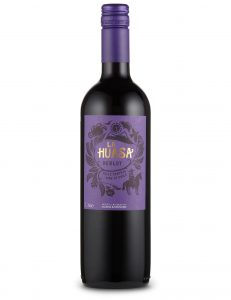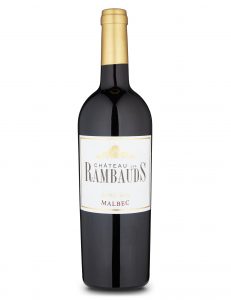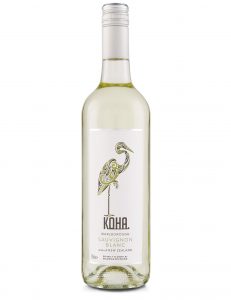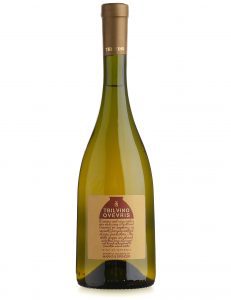With the revival of the instantly recognisable M&S “It’s Not Just …. ” strap line for food, it seems timely to take a look at the wines to drink with it.
Although my magic bullet choice is actually on promotion at £6, the strength of the M&S list probably resides in its £7-£10 wines and, so, that is where today’s focus is aimed.
Options covered range from a Bordeaux malbec to “white” wine from Georgia with a slightly different take on Marlborough sauvignon in between.
Also covered in the post are the usual Best of the Rest selections, a glance at the closing Tesco promotion and a Top Tip about sauvignon.
Use the pictures next to the description of a wine to help you find it quickly on a crowded display.
Magic Bullet Selection

Merlot grows in so many parts of the world that, unsurprisingly, it has a variety of styles (from mere crowd pleaser to aristocratic Bordeaux superstars) but here is one from Chile’s Central Valley that is a cut above rivals at similar price points.
Aromatic with a savoury base yet hints of sweetness and ripeness too, 2017 La Huasa Merlot (£6 – instead of £7 until 27 May – at M&S and 13% abv) also contains black cherry and cassis fruit, good acidity, firm tannin and suggestions of aniseed and chocolate.
As regular MidWeekers will know, the “Magic Bullet” choice (like its equivalent in the medical profession – effective solutions without side effects) is especially noteworthy because it tastes good without the disadvantage of costing a lot.
To more of a “stay at home” grape

Unlike merlot, corvina grapes are largely confined to north east Italy where they form the mainstay of the red wines of Valpolicella and – of course – the illustrious Amarone.
Enjoy then the great value, floral 2018 Valpolicella Valpantena (£7 – its ongoing price – and 12.5%) with plum and cherry fruit, sharp acidity and limited tannin all supported by chocolate, clove and vanilla elements.
Meanwhile back in Chile

In addition to well made merlot, parts of Chile’s Central Valley are also home to some of the country’s best examples of that other Bordeaux giant – cabernet sauvignon.
See what I mean with the soft, cherry and loganberry centred 2018 Casa de Colores Cabernet Sauvignon (£9 and 13%) that also exhibits suggestions of vanilla and cinnamon yet has only gentle tannin but good acidity.
Now for some malbec

As soon as we hear malbec, minds skip over the Andes from the last wine to Argentina but – as the French would be quick to point out – malbec originates from southern France; and this one is from Bordeaux.
Plum and bramble fruit dominate 2017 Chateau Les Rambauds Malbec (£9.50 and 13%) but are nicely supplemented by textured herbal and clove depth, soft tannin and lively acidity.
Stepping up a little

Reserva wine from Rioja gets a little extra time in oak to smooth out its rough edges but, in this case, not dimming its fruit components – which here are 100% tempranillo, without any of the balancing garnacha that is often blended in hereabouts.
2014 El Duque de Miralta Rioja Reserva (£12 and 13.5%) still has dense cherry and raspberry fruit with hints of mocha and chocolate, firm tannin, good acidity and an attractive savoury background.
Meanwhile among the whites

I have a lot of time for Rod McDonald – who used to be winemaker at Vidal Estate but now “goes it alone” – and this example of his handiwork has the extra complexity that signifies sauvignon blanc that is a cut or two above the ordinary.
Note, in particular, how 2018 Koha Sauvignon Blanc (£8 and 11.5%) – from Hawkes Bay not Marlborough – has apple and greengage fruit (rather than gooseberry) and enlivens it with lemon based acidity, but also incorporates a sweet ripeness and a degree or two of extra texture.
Switching tack completely

Next up is a Rhone white with grenache blanc and clairette leading the blend (albeit with a 15% contribution from the usual suspects – roussanne and marsanne) but with no oak used at all in its production.
Building on a depth that displays touches of vanilla and of more savoury spices, 2018 Reserve du Boulas Cotes du Rhone Villages (£10 and 14%) brings us quince, apple and ripe pear fruit that add sweet edges yet never conflict with the wine’s attractive underlying acidity.
Timid drinkers should go straight to the next wine

If you are still reading this then you may be adventurous enough to try this very different Georgian white featuring rkatsiteli grapes (the “go to” variety behind the former Iron Curtain) that has been fermented with its skins and pips – and is then aged in clay jars (Qvevri).
With a minty texture but orange colouration, 2016 Tbilvino Qvevris (£10 and 12%) has soft apple peel fruit, a herbal background and firm citrus acidity. Do see what you think!
Finally to fizz

Kent’s Hush Heath operation is behind this excellent and well priced sparkling rosé that is an appealing blend containing two thirds pinot noir and one third chardonnay.
The result in Balfour Oast House Cuvée Rosé (£20 and 12%) has gentle raspberry and red cherry fruit with nippy acidity, a good mousse and rather nice hints of spice.
BEST OF THE REST
Everyday Australian Pinot Noir

Understandably, when we talk about Australian pinot noir, thoughts turn to the megastars of, say, Mornington Peninsula but that county also produces well priced and well made everyday versions like this.
Enjoy the floral, cherry and raspberry fruit of 2018 The Interlude Pinot Noir (£6 – instead of £7 until 4 May – at the Co-op and 13.5%) with its mild tannin, gentle acidity and relatively light texture – despite a certain evolving cocoa depth.
Is Rueda changing slightly?

While entry point Verdejo from Spain’s Rueda region retains its savoury foundation, things do seem to be changing – with several counterbalancing factors beginning to surface, as this great value version illustrates.
Clean grapefruit acidity and citrus peel influences are readily apparent in 2017 The Best Canto Real Verdejo (£6 at Morrisonsand 12.5%) to mingle agreeably with its white plum fruit and traditional liquorice base.
SUNSET CORNER
This is the feature where I call attention to wine promotions that are about to end so you can call into the store and see what takes your fancy.

Today, the focus is on the Tesco discounts that conclude next Monday (6 May) and here are a few of its highlights (complete with links to the Tesco website) that you might like to consider.
Where I have tried them in the last few weeks and think they will appeal, I have added a comment in bold type.
Others I may not have tried recently enough to give you a firm steer.
Tesco Finest Vinas Del Rey Albarino 75Cl Was £8.50 now £6.50
Tesco Finest Monteforte Pinot Grigio 75Cl Was £8.50 now £7.50 (Good Option)
Tesco Finest St Mont 75Cl Was £6.50 now £5 (Best Buy White)
Tesco Finest Fair Trade South African Chenin Blanc75cl Was £7.50 now £6
Tesco Finest Fair Trade Breede River Sauvignon Blanc 75Cl Was £7.50 now £6
Wairau Cove Rose 75Cl Was £7.50 now £6.50
Tesco Finest Puemo Carmenere 75Cl Was £9 now £7 (Excellent value red)
Tesco Finest St Chinian 75Cl Was £7.50 now £6.50 (Excellent value red)
Tesco Finest Fair Trade South African Pinotage 75Cl Was £7.50 now £6
Tesco Finest Minervois La Liviniere 75Cl Was £9 now £7.50 (Excellent value red)
Tesco Finest Chianti Classico DOCG 75Cl Was £8.00 now £7.00
Tesco Finest Pignoletto 75Cl Was £8.50 now £7.50
Tesco Finest Vintage Cava 75Cl Was £9 now £7.50
Remember though:
All these wines are “subject to availability” and prices may change – the “in store price” is the final word.
Minimum pricing laws mean that what you pay may differ slightly in Scotland.
These details are for information and, unlike commendations elsewhere on this site, are not necessarily endorsements for the products unless I have added a comment in bold print.
TOP TIP
Top Tip: Work out which side of the equator your white wine preferences lie
So, what unites a Sixteenth Century constipation cure and one potentially beneficial small picture effect of ozone layer damage?
The answer is the Sauvignon Blanc phenomenon.
The earliest reference to the grape in the Loire seems to be in 1534 where, apparently, it was recommended for the said medical use.
Equally, folk suggest that the grape variety is especially sensitive to strong sunlight and ozone layer “holes” over New Zealand (and the reduced pollution helped by the islands’ isolated position) may be- the theory goes – why their sauvignon seems especially distinctive.
Both areas, however, have risen to become major sauvignon producers and they do, indeed, have several similarities.
Annual rainfall (28-9 inches) is almost identical and so are temperatures during the growing season (just under 16°C).
Their wine styles do, however, differ appreciably partly because of other (fairly obvious) geological, latitude and climate influences but some reasons are much less clear-cut.
Why, for instance, are compounds called methoxypyrazines (components that seem to induce sweaty and sweet passion fruit influences) elevated in Marlborough and why on earth does machine picking increase them more than hand harvesting?
A brilliant recent tasting hosted by Loire Valley Wines and New Zealand Wine set out to investigate the similarities and differences between the two regions’ wines more closely.
It was fronted by Rebecca Gibb MW (who knows New Zealand wines intimately) and Jamie Goode (who combines the skills of wine taster and plant biologist brilliantly).
Six pairs of wines were tasted – with each pair containing broadly comparable participants from each region. Peter Dean’s excellent piece in The Buyer goes into the specific wines in more detail.
However, three broad conclusions struck me quite forcefully:
Even allowing for careful selection, all the wines presented from both areas were pretty good – reinforcing the massive choice of well made sauvignon blanc available in the UK.
Secondly, the differences between the two areas do emerge quite clearly – most people at the tasting correctly assigned most wines to the right country.
In simplistic terms, it confirms that Loire wines tend to be earthier, more restrained but put power on the palate and are more likely to exhibit grapefruit and mineral influences.
By contrast, classic Marlborough versions tend to be more forceful and intense, fuller and fruit driven, put power on their aromatics and are more likely to display gooseberry, tropical fruit and green pepper influences.
Returning to the broad conclusions though, there were indications that we may be shooting at a moving target here.
Two wines that foxed me (and I was not alone) were the pair from the Bourgeois family that has vineyards in both the Loire and in Marlborough – with wine makers obviously learning from one another.
The tangerine and green pepper elements in their 2017 Cote de Monts Damnés from Sancerre gave a clear nod towards New Zealand styles. Does this suggest that we may be looking at much more convergence a decade from now?
For the present, however, look back four or five paragraphs and decide which style suits you better and then use an example of it to celebrate Sauvignon Day this coming Friday.









2 responses
This is a great informative email that I really enjoyed reading.
Thank you
Thank you Nina it is really kind of you to take the trouble to comment. There is so much good wine out there that goes largely unrecognised – so it is satisfying not only to highlight it but to know that our doing so is appreciated.